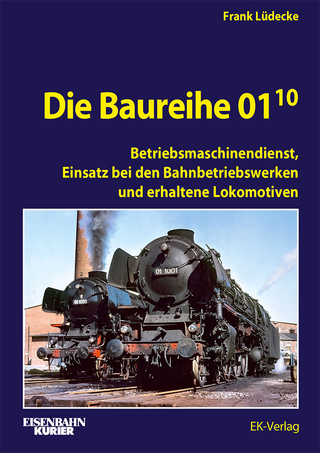
German Traction
Seiten
2018
Amberley Publishing (Verlag)
978-1-4456-6694-5 (ISBN)
Amberley Publishing (Verlag)
978-1-4456-6694-5 (ISBN)
In this highly illustrated guide, Andrew Cole explores the railways of Germany. The enthusiast is always guaranteed to see a wide variety of locomotives in action.
Germany, by its very location and size, is host to a vast number of different traction types. The main operator is DB, and they run huge numbers of both freight and passenger workings that still have locomotive haulage. On the passenger side, most main regional centres retain loco-hauled workings, ranging from Class 111s to Class 143s and Class 146s, with the InterCity work operated by Class 101 electric locomotives. A lot of the express passenger workings have gone over to ICE units. There are also still some diesel locomotive diagrams, mostly in the hands of the Class 218 locomotives based mainly around Ulm and also Munich.
On the freight side, there are vast numbers of workings operated by both DB and by a large number of private firms. The main DB locomotives used are the Class 185 TRAXX locomotives and also the Class 145 and 152 locomotives, while there are still some big diesels to be seen, most notably the Class 232 locomotives, known as Ludmillas.
Upon reunification of Germany, a lot of the former East German locomotives started to appear in the West and vice versa and the enthusiast is always guaranteed to see a wide variety of locomotives in action.
Germany, by its very location and size, is host to a vast number of different traction types. The main operator is DB, and they run huge numbers of both freight and passenger workings that still have locomotive haulage. On the passenger side, most main regional centres retain loco-hauled workings, ranging from Class 111s to Class 143s and Class 146s, with the InterCity work operated by Class 101 electric locomotives. A lot of the express passenger workings have gone over to ICE units. There are also still some diesel locomotive diagrams, mostly in the hands of the Class 218 locomotives based mainly around Ulm and also Munich.
On the freight side, there are vast numbers of workings operated by both DB and by a large number of private firms. The main DB locomotives used are the Class 185 TRAXX locomotives and also the Class 145 and 152 locomotives, while there are still some big diesels to be seen, most notably the Class 232 locomotives, known as Ludmillas.
Upon reunification of Germany, a lot of the former East German locomotives started to appear in the West and vice versa and the enthusiast is always guaranteed to see a wide variety of locomotives in action.
Andrew Cole has been interested in railways for over thirty years, sharing the hobby with his brother and late father, who ignited his interest. He has been lucky enough to see many different classes of loco. He lives in Birmingham with his wife and daughter, and has been employed by the railways for more than fifteen years.
| Erscheinungsdatum | 16.10.2018 |
|---|---|
| Zusatzinfo | 180 Illustrations |
| Verlagsort | Chalford |
| Sprache | englisch |
| Maße | 165 x 234 mm |
| Gewicht | 279 g |
| Themenwelt | Natur / Technik ► Fahrzeuge / Flugzeuge / Schiffe ► Schienenfahrzeuge |
| ISBN-10 | 1-4456-6694-4 / 1445666944 |
| ISBN-13 | 978-1-4456-6694-5 / 9781445666945 |
| Zustand | Neuware |
| Haben Sie eine Frage zum Produkt? |
Mehr entdecken
aus dem Bereich
aus dem Bereich
St. Moritz – Zermatt : die Traumreise im langsamsten Schnellzug der …
Buch | Hardcover (2023)
Verlag Berg & Tal
CHF 25,90
Betriebsmaschinendienst, Einsatz bei den Bahnbetriebswerken und …
Buch | Hardcover (2024)
EK-Verlag
CHF 68,90
Buch | Hardcover (2023)
GeraMond (Verlag)
CHF 41,90


